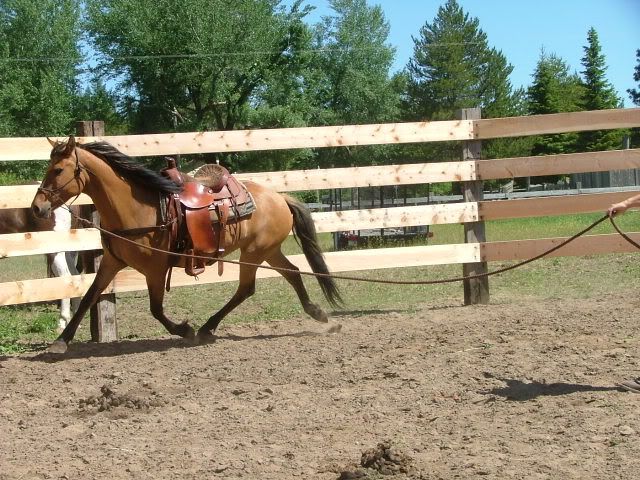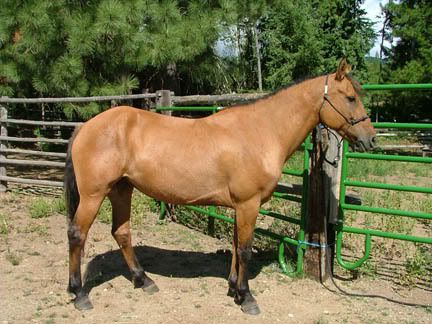|
|
Post by sbutter on Jan 17, 2009 12:11:02 GMT -5
That would be a good idea to compare the "found" horses with the "pure" kigers. It would probably be good to hear/see the difference with the "found" horse (one that hasn't been crossed with a kiger yet). I wish there was some way to evaluate every "found" horse /"found" horse crosses to see if there is or is not a difference and if they too have that "special something". How many "pure" kigers have it? Each breed has its best and worst group, so it would be good to get an overall view of these horses. What "found" horses have proven themselves to be awesome crosses with the kigers? To the point where you can't tell the difference between the two.
Side note- is that "special something" something that the kigers have picked up in the wild? How many other mustangs have it and can pass it on? How long will the kigers pass it on if it is something they picked up in the wild and was bred into them? Is that something that we as breeders will have to be very careful not to breed out? If that "something" only keeps for a couple of generations from horses out of the wild, will we have to reintroduce the fresh wild blood into them periodically?
I also had the same thoughts on crossing other horses into the kiger. It is very tricky business and you don't want to lose what makes the kiger a kiger. Jillian also made a very good point about the improvement from outside crosses. Are they performing better because of the kiger or from the other cross? It would be one thing if you just wanted a kiger cross, because you wanted the best of both breeds and wanted to do some major events with them. But entirely another if you are trying to promote the breed while crossing them with other breeds to try to "improve" your breeding stock of kigers (looking several generations into the future). It's kind of odd to be toting the kiger and how amazing they are while at the same time, using kiger crosses as your soul breeders to try to get a foothold in the big competition world. People would wonder if it was the kiger or the other cross that is making them successful. It may be a good shortcut to try "now" but it would probably be detrimental to the breed in the long run to use those crosses and promote them as "kigers" and completely base your breeding program off of those "improved" horses. It may take longer, but it would be better to stick with the kiger to promote the kiger and try to improve the quality. The crosses definitely have their place and will be very helpful in promoting the breed to outsiders who may not want to take the full step into kigerhood. As far as the future of breeding goes, it would probably be better to stick to as pure as possible.
|
|
|
|
Post by idahomustanger on Jan 17, 2009 12:21:03 GMT -5
I've been watching the found horse issue appear year after year from the time when I first became aware of the Kigers. It has always been interesting to watch these conversations and the way they progress. Of course, I have my own opinions, and while I am expressing them....please remember, that is what they are -- MY OWN OPINIONS. Until people let the past stay in the past, and go forward from this date...this issue will not be put to bed. There needs to be concessions from both - the "purists" and those on the other side. We do (did) have a "foundation" Kiger Stallion, Running Shadow, (he has since been gelded) and although we are not breeding any longer we raised 4 part blood Kiger foals and there are 3 other of his get on the ground... not a large breeding record, but I can tell you without a doubt that there is a common trait that runs through all 7 of his get, and I can also tell you that it comes from the "Kiger" blood. There are 4 mares and 3 geldings in this 7. They range from age 6 years (3 of them ) 2 of them are coming 4 year olds and 2 of them coming 3 year olds. 2 mares are from Shadow and our Sheepshead BLM mare Oregon Honey; 1 mare is from Shadow and Apollo's Page (the mare with the dreaded "found" blood) 1 gelding is from our 3/4 Kiger - 1/4 QH ranchbred mare, Lady Gwynn; 1 gelding is from a friends deceased QH mare, and the last 2 - a mare and a gelding are from a Foundation Appaloosa mare. All of these horses have the same attitude that I call "sweet but quietly determined" and that attitude comes from Shadow. He has put his Kiger stamp on all of them - with that attitude...but also in many other ways too. Just from this alone I have come to have the opinion that Found Blood is not such a big deal because the Kiger traits seem to shine through. I have to say that I've never been to caught up in the "pure" vs "found" blood issue because it's my belief that Kigers were all "found" to begin with, and just managed well (including the infusion of other blood by BLM at different times) There is no doubt the the Kigers have something unique....and they have become our "chosen" horse for the remainder of our horse lives. We've both had several different breeds of horses in our early days and we are content with our Kigers. Now, we only have one horse considered to be foundation - the rest are crosses..but even though they have different horsenalities...there is something very much the same within our group.
I will post pictures of the 7 crosses and the mare with found blood a little later and you can compare them with whoever if you wish. Some of the pictures are a couple years old, but you can still see how they have turned out.
Nancy
|
|
|
|
Post by idahomustanger on Jan 17, 2009 13:50:11 GMT -5
Ok here is the first picture I'm posting. Dunny is a Kiger/QH cross gelding as a 3 year old. Dunny is now on a dude ranch in Montana as one of the owner's personal trusty mount!  For some reason I couldn't upload his baby picture. |
|
|
|
Post by idahomustanger on Jan 17, 2009 14:12:21 GMT -5
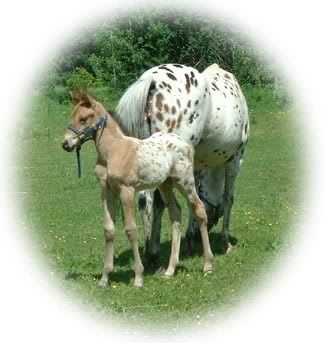  This is Shadow Dancin' Gypsy - You've all seen her before... |
|
|
|
Post by idahomustanger on Jan 17, 2009 14:16:56 GMT -5
This is Shadow Dancer or "Tudie" - She is out of our Sheepshead BLM Mare and Shadow. This is as a 4 year old 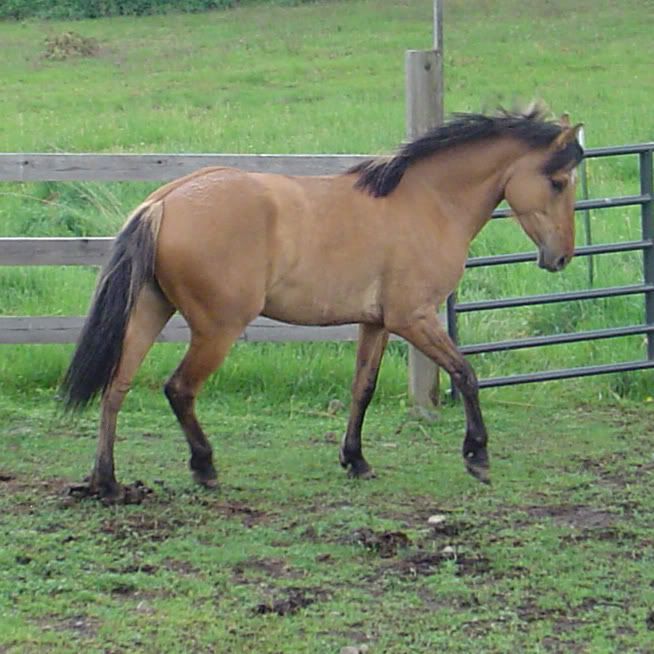  |
|
|
|
Post by idahomustanger on Jan 17, 2009 14:24:13 GMT -5
This is Classic Shadow or Classy - She's a coming 4 year old and out of Shadow and Oregon Honey. A full sister to Tudie. I have her and will be keeping her. 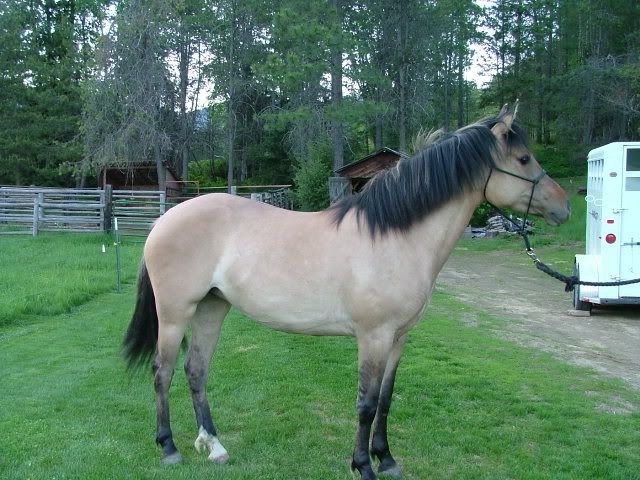 |
|
|
|
Post by idahomustanger on Jan 17, 2009 14:27:39 GMT -5
This is Selkirk Shadow as a 3 year old - she is out of Shadow and Apollo's Page (I know she is fat as pig here! She'd been out on summer pasture!) 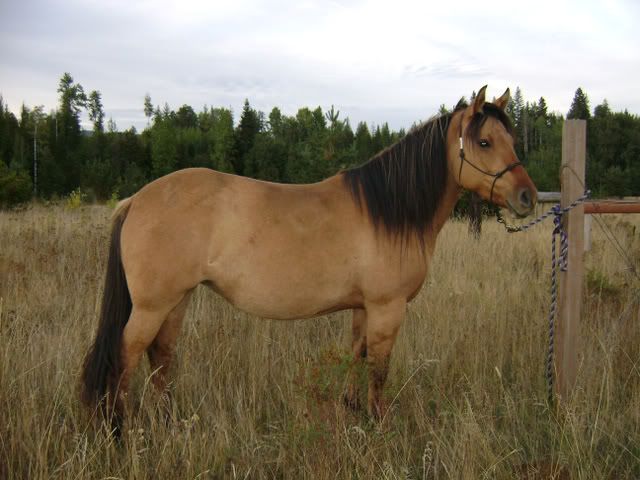 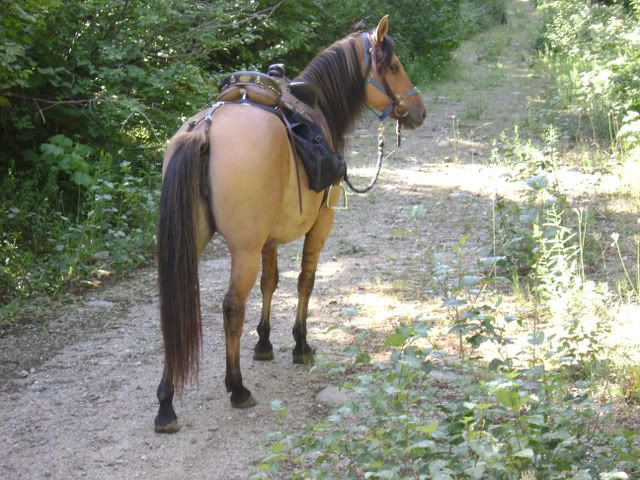 |
|
|
|
Post by karismakigers on Jan 17, 2009 14:27:51 GMT -5
I was told when the Kigers where DNA tested that besides the other markers they had, they also had DNA unique unto their own...any truth to this?  Not DNA, but mtDNA. There were 27 Kigers sampled. The Kigers had 4 strains of mtDNA. A3, D1, D2, D3. The D cluster is the same that Sulphurs and many other mustangs also came up positive for. A3 seems to be unique to the Kigers, in that NO other mustang groups had it. It is known as the Lusitano cluster as so many of the Lusitanos have it. One "Found" blooded Kiger was included, her maternal line was from Sheepshead HMA and she was in the D1 cluster (Andalusian cluster). karismakigers.com/oldpages/KigerAncestry.htmlI'll have to dig into the boxes of BLM paperwork, its been packed away while I work on other projects. I did find on my old site (links won't work) the direct quote snippets from the first management plans of the Kiger horses that related to selection of characteristics. You can see the evolution of the Kiger breed from early 1970s to 1995. karismakigers.com/oldpages/HerdManagement.htmlkarismakigers.com/oldpages/HerdManagement2.htmlJillian |
|
|
|
Post by idahomustanger on Jan 17, 2009 14:31:07 GMT -5
This is Kaniksu Shadow or Nik -- he's coming 3 and will be started under saddle - we are keeping him also -- he is out of Shadow and Lady Gwynn our 3/4 Kiger-1/4 QH Mare.  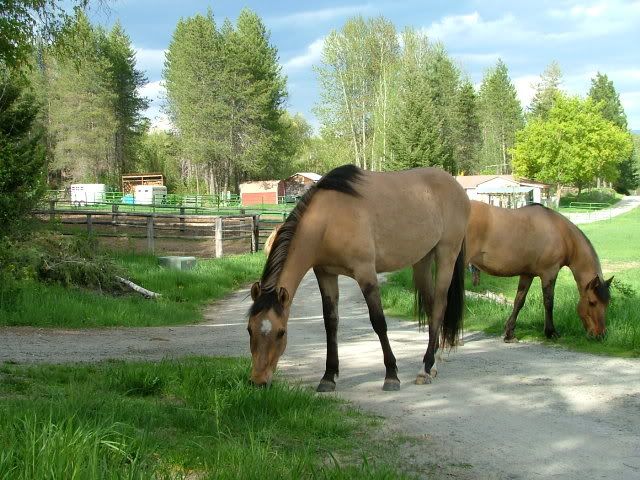 |
|
|
|
Post by idahomustanger on Jan 17, 2009 14:33:26 GMT -5
This is Shadow's Independence - a coming 3 year old (only this picture is at a 2 year old He is a full sibling to Shadow's Dancin' Gypsy... Can you believe it? No Appy markings on him at all! 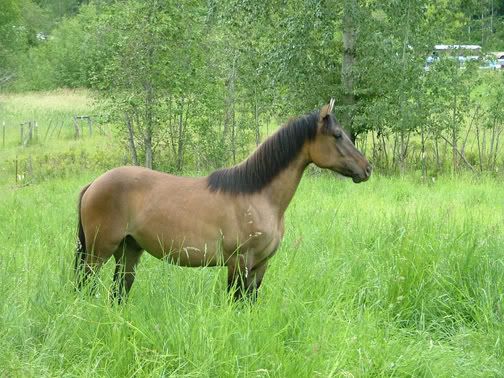 |
|
|
|
Post by idahomustanger on Jan 17, 2009 14:37:50 GMT -5
|
|
|
|
Post by idahomustanger on Jan 17, 2009 14:42:29 GMT -5
I'm done -- sorry I took up so much room. Maybe I missed the point... but to my way of thinking...I don't see where the found blood has hurt Shadow's (the "pure" kiger) influence on his get at at all whether it be Sheepshead or whatever. Page's dam is Vale Foxfire and she's also from Sheepshead.
|
|
|
|
Post by karismakigers on Jan 17, 2009 14:46:13 GMT -5
I once thought that the found blood would peter out, and maybe it will eventually. But as of a few years ago there were still breeders breeding 100% found horse to 100% found horse. Bettye Roberts did some research about three years ago, not sure of her source but she's pretty careful about what she says. She said that 30% of the KMA horses had found blood. That's pretty high for 20 years of breeding. I do notice that many people who were breeding found horses have started focusing on foundation horses. Without a current KMA studbook, I won't be able to comment on what Roberts has said in the past. Although, I would like to know what year the last 100% Found to 100% Found did take place? Most breeders that I know that have found blood have mostly bred Found and Found % to Kiger/Ridde. Population % is a funny thing. Do you take only registered animals to determine the population? Do you include those animals that were DQ or placed in non-breeding category as part of the population? How many people have horses that haven't been registered in KMA? What % of those horses are Kiger/Riddle and what % are found blooded? Most of the 100% Found horses are dead today. Do we keep including them in the population, or only consider the live/possibly live horses to determine population %? With 2 large gatherings/adoptions of the Kiger horses since the date that my KMA studbook was current, I'd almost bet $$$ that the % of found blooded Kigers in the Kiger live population is less than 20%, maybe even as low as 10% today. In fact, I might be able to prove it. Packed away, I have a list of all horses every gathered/adopted off of Kiger/Riddle up to and including the 2003 adoption. When I find the list, all post the number of horses total and the total of horses under 20 years of age (giving a life expectancy of 20 years.) I'll order a new KMA studbook this month and when I have it, all determine the number of found-blooded horses total and the number under 20 years of age. That will give us a better idea of the actual true population % of found blooded and non-found blooded Kigers. ;D Jillian |
|
|
|
Post by nightrider on Jan 17, 2009 16:15:21 GMT -5
That would be a good idea to compare the "found" horses with the "pure" kigers. It would probably be good to hear/see the difference with the "found" horse (one that hasn't been crossed with a kiger yet). I wish there was some way to evaluate every "found" horse /"found" horse crosses to see if there is or is not a difference and if they too have that "special something". How many "pure" kigers have it? Each breed has its best and worst group, so it would be good to get an overall view of these horses. What "found" horses have proven themselves to be awesome crosses with the kigers? To the point where you can't tell the difference between the two. Side note- is that "special something" something that the kigers have picked up in the wild? How many other mustangs have it and can pass it on? How long will the kigers pass it on if it is something they picked up in the wild and was bred into them? Is that something that we as breeders will have to be very careful not to breed out? If that "something" only keeps for a couple of generations from horses out of the wild, will we have to reintroduce the fresh wild blood into them periodically? I also had the same thoughts on crossing other horses into the kiger. It is very tricky business and you don't want to lose what makes the kiger a kiger. Jillian also made a very good point about the improvement from outside crosses. Are they performing better because of the kiger or from the other cross? It would be one thing if you just wanted a kiger cross, because you wanted the best of both breeds and wanted to do some major events with them. But entirely another if you are trying to promote the breed while crossing them with other breeds to try to "improve" your breeding stock of kigers (looking several generations into the future). It's kind of odd to be toting the kiger and how amazing they are while at the same time, using kiger crosses as your soul breeders to try to get a foothold in the big competition world. People would wonder if it was the kiger or the other cross that is making them successful. It may be a good shortcut to try "now" but it would probably be detrimental to the breed in the long run to use those crosses and promote them as "kigers" and completely base your breeding program off of those "improved" horses. It may take longer, but it would be better to stick with the kiger to promote the kiger and try to improve the quality. The crosses definitely have their place and will be very helpful in promoting the breed to outsiders who may not want to take the full step into kigerhood. As far as the future of breeding goes, it would probably be better to stick to as pure as possible. |
|
|
|
Post by canadiankigers on Jan 17, 2009 16:46:01 GMT -5
This is "My Sunrise Surprise" or Baby as we call her around the barn. She is a Kiger Arab cross filly. (Red Dun Sabino) Picture taken June 2007 at 4 months old.  Here she is again in her winter woolies. Picture taken Feb 2008 at 14 months old.  |
|

















